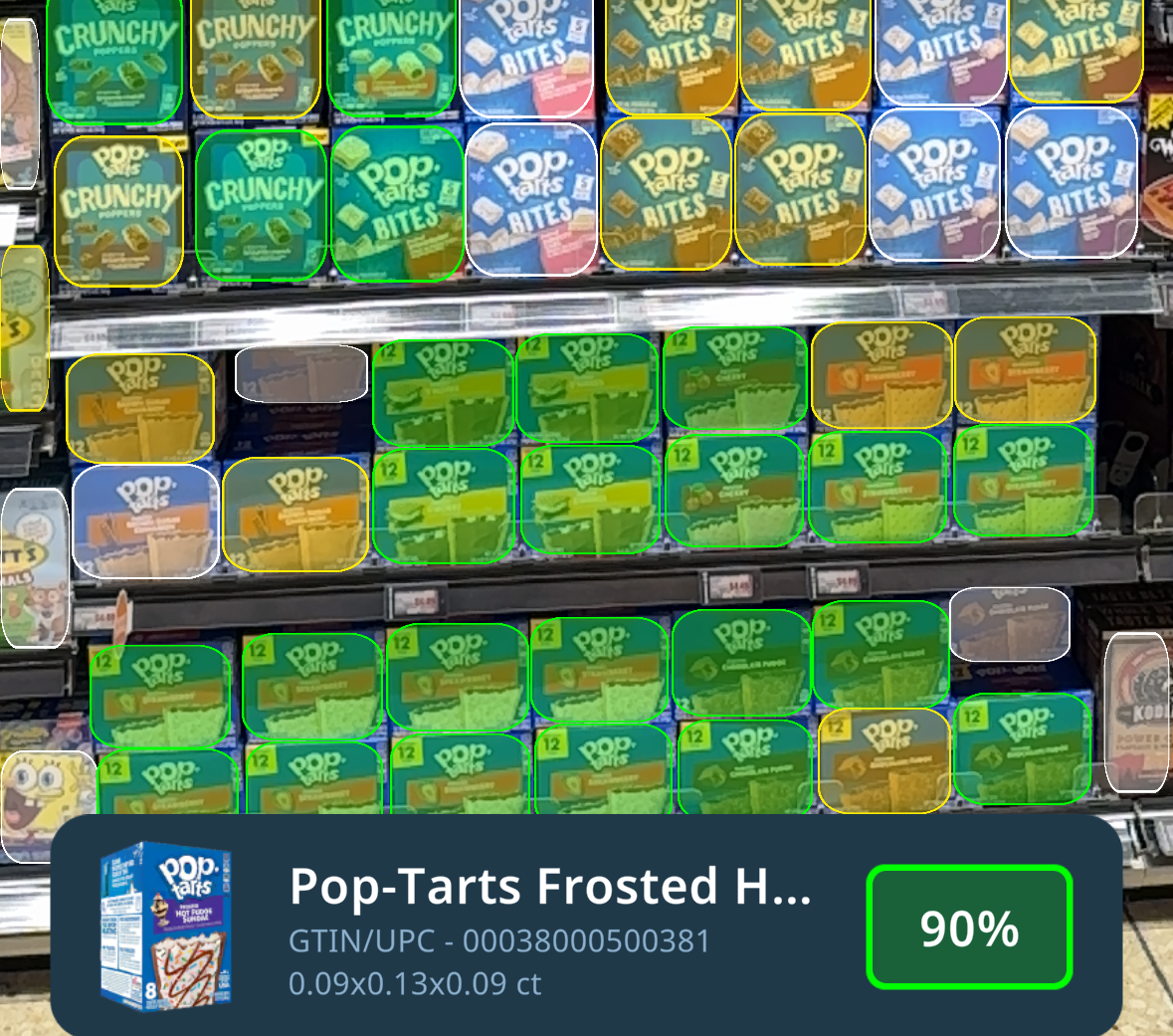In the aisles of supermarkets, every product placement, pricing label, and promotional display is strategically designed to influence consumer behavior. However, behind these seemingly simple arrangements lies a complex science that delves into the depths of consumer psychology and decision-making processes. From the subtle use of color to the strategic placement of products, every aspect of supermarket merchandising techniques is meticulously crafted to capture attention and sway purchasing decisions.
In this blog post, we’re delving into the science behind shopping, uncovering the principles driving supermarket consumer behavior. We will also explore how businesses leverage virtual reality (VR) and augmented reality (AR) technology to test and visualize the effectiveness of various merchandising techniques, offering insights into their real-world impact. Our goal is to highlight the relationship between merchandising strategies and consumer responses, providing valuable insights for retailers to increase sales and transform the customer experience.
Understanding Consumer Behavior in Supermarkets
Understanding supermarket consumer behavior requires a deep dive into the psychological factors influencing decision-making. One key element is perception, and according to a recent article by Forbes, perception not only matters but can have a significant impact on purchasing. Consumers are drawn to products that align with their perceived needs, desires, and preferences. From eye-catching packaging designs to strategically placed products, supermarkets leverage perception to create an environment where certain items stand out more than others. Emotions also hold considerable power over purchasing decisions. According to an article released by Inc., 95% of purchasing decisions are actually subconscious. Whether it’s the nostalgia evoked by a childhood favorite snack or the sense of luxury associated with premium brands, emotions can heavily influence what ends up in a shopper’s basket. By tapping into consumers’ emotional responses, supermarkets can create connections with their target audience and drive sales through tailored marketing strategies.
In addition to perception and emotions, cognitive biases play a significant role in shaping shopping behavior. These biases, often unconscious, can lead consumers to make irrational decisions or judgments based on subjective reasoning rather than objective facts. From the anchoring effect, where consumers rely heavily on the first piece of information they encounter, to the scarcity heuristic, which drives urgency through perceived scarcity, cognitive biases can profoundly impact purchasing decisions in supermarkets. Take, for example, Target, one of the largest retailers in the United States. Their strategically placed section at the front of the retail store provides a first impression on customers, creating a sense of urgency to purchase something in that location they might not find elsewhere. The result? There is an incredible uptick in impulse purchases.
Retailers must understand these cognitive impacts to effectively design merchandising strategies that appeal to consumers’ inherent biases and tendencies, ultimately influencing their shopping behavior in the desired direction.
Using Consumer Behavior to Drive Supermarket Merchandising Techniques
Using consumer behavior insights to drive supermarket merchandising techniques is essential for maximizing sales and enhancing the shopping experience. By understanding the psychological factors that influence purchasing decisions, such as perception, emotions, and cognitive biases, retailers can tailor their merchandising strategies to resonate with their target audience. Additionally, leveraging emotions through sensory experiences like sampling stations or appealing packaging can evoke positive associations with products, driving impulse buys.
By integrating consumer behavior insights into their merchandising techniques, supermarkets can create more engaging and effective shopping environments that cater to the needs and preferences of their customers, ultimately increasing sales.
Let’s take a look:
Effective Merchandising Strategies
Visual Merchandising Techniques
Visual merchandising strategies involve deliberately arranging and presenting product displays to enhance brand visibility and attract customer attention. Eye-level placement, endcap displays, shelf-edge signage, and overall planogram compliance, are crucial in guiding shoppers’ attention and influencing their purchasing decisions. For instance, eye-level placement leverages shoppers’ natural browsing behavior, making it easier to spot and consider products.
Endcap displays at the end of aisles serve as focal points for highlighting special offers or seasonal items, prompting impulse purchases. Shelf-edge signage provides additional product information and calls attention to promotions, enticing customers to explore further. These visual merchandising strategies create an engaging and immersive shopping experience, driving customer engagement and ultimately increasing retail sales. For example, a clothing retailer might arrange their best-selling items at eye level, with corresponding signage highlighting limited-time discounts, encouraging immediate purchases, and enhancing brand visibility.
Product Placement Strategies
Product placement strategies involve strategically positioning products within a retail space to optimize visibility and encourage sales. Techniques such as cross-merchandising and cross-channel placement aim to enhance the customer experience and drive additional purchases. Cross-category merchandising strategically pairs complementary products, encouraging add-on purchases and improving the overall shopping experience. For example, a grocery store may display pasta sauce next to pasta, prompting customers to purchase both items together. Conversely, cross-channel placement optimizes product visibility across various store areas, considering customer behavior and shopping patterns.
By analyzing data and understanding how customers move through the store, food service retail stores can identify the most profitable locations for their products, increasing the likelihood of conversion. These product placement strategies leverage customer behavior and preferences to drive sales and maximize profitability, ultimately contributing to a positive shopping experience and brand loyalty.
Pricing Techniques
Pricing techniques encompass various strategies retailers employ to influence consumer behavior and drive sales. Techniques like charm pricing, discounting, and bundling create perceived value and encourage purchase decisions. Charm pricing, for example, involves pricing products just below a round number (e.g., $9.99 instead of $10) to make them appear more affordable and psychologically appealing to customers.
Discounting strategies, such as BOGO offers or percentage discounts, create a sense of urgency and incentivize immediate purchases. Bundling combines multiple products or services into a single package at a reduced price, offering customers added value and encouraging upselling. These pricing techniques leverage consumer psychology and behavioral economics to influence purchasing decisions and drive sales. A retailer, for example, might offer a limited-time discount on a popular item, creating a sense of urgency and prompting customers to make a purchase decision immediately.
Leveraging the Shopper Experience
The shopper experience encompasses all aspects of the customer journey within a retail environment, from initial engagement to post-purchase satisfaction. Factors such as store layout, ambiance, customer service, and convenience are crucial in shaping the shopping experience and influencing consumer behavior.
For instance, a well-designed store layout that promotes easy navigation and product discovery can enhance customer satisfaction and encourage longer browsing times. Friendly and knowledgeable staff can provide personalized assistance and recommendations, fostering positive interactions and increasing customer loyalty. Additionally, convenient parking, clean facilities, and efficient checkout processes offer a seamless and enjoyable shopping experience. An example of a positive shopping experience is a boutique clothing store with a welcoming atmosphere, helpful staff, and a curated selection of high-quality products, providing customers with a memorable and satisfying shopping experience and encouraging them to become repeat customers.
Testing Supermarket Merchandising Techniques: The Key to Success
Store merchandising strategies form a critical foundation for effective supermarket businesses, but they are only part of the equation. It’s essential to substantiate assumptions with concrete data to ensure effective decision-making. With technologies such as VR and AR, companies now have the tools to measure the effectiveness of their strategies before implementing them on the shelf. This proactive approach ensures that businesses make the right choices the first time around, minimizing risks and maximizing returns. Unfortunately, many supermarkets underestimate the potential impact of testing in-store, unknowingly leaving substantial revenue on the table. At InContext, we leverage our digital platforms to help companies test their strategies with an impressive 91% correlation rate to real-world shopper behavior.
Data serves as the cornerstone for improving the shopper experience by providing a comprehensive and objective understanding of customer behavior, preferences, and needs. By collecting and analyzing data, businesses can uncover valuable insights to tailor their products, services, and marketing strategies to meet and exceed customer expectations. At InContext, we harness the power of data to make decisions that drive business performance strategically. Our ShopperMX platform offers a revolutionary way to test and predict outcomes, allowing businesses to create digital simulations of store environments and analyze customer behavior through virtual shopping scenarios. Are you looking to rearrange your store shelf to showcase best-sellers and maximize profits? We can test it. Have you been wondering why your private label product isn’t selling as well as it used to? Or how to introduce new products to the shelf? We can test that, too.
This proactive approach enables businesses to make adjustments before implementation in-store, reducing risk and enhancing the overall customer experience. Whether it’s testing new cross-merchandising strategies or optimizing product placement and branding choices, our digital solutions enable businesses to make informed decisions and stay ahead of the competition.
Partner with InContext
The science of shopping unveils the intricate psychological factors that influence supermarket consumer behavior. Businesses gain invaluable insights into shoppers’ preferences and tendencies by analyzing the effectiveness of various merchandising techniques through innovative technologies like virtual reality (VR) and augmented reality (AR). However, harnessing the full potential of these insights requires strategic partnerships with industry leaders like InContext.
By leveraging our cutting-edge digital platforms, such as ShopperMX, businesses can test and refine their merchandising strategies with unprecedented accuracy and efficiency. InContext’s commitment to data-driven decision-making empowers supermarkets to create engaging and tailored shopping experiences that resonate with customers, which ultimately boost sales and foster long-term loyalty. As the retail landscape continues to evolve, embracing the science of shopping and leveraging advanced technologies in collaboration with partners like InContext will be crucial for staying ahead of the curve.
If you’re ready to partner, contact us.





